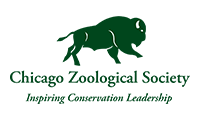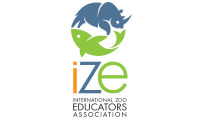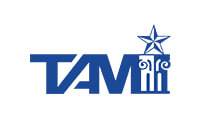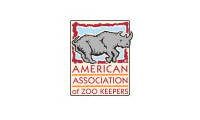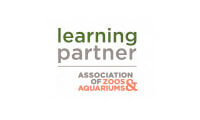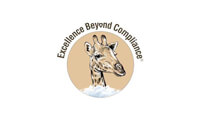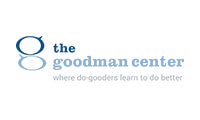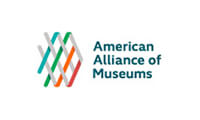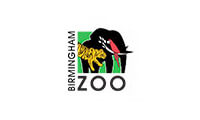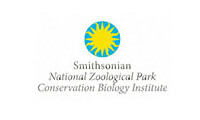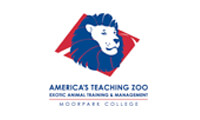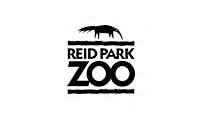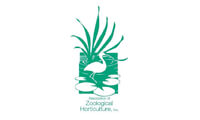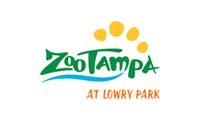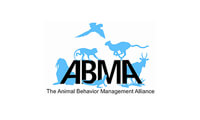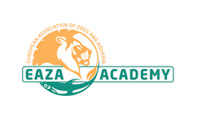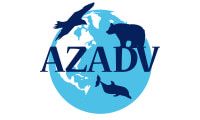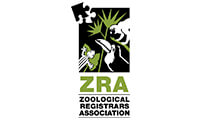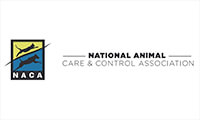Getting Better All the Time
Joyfully, Lovingly, and Creatively Using Our Lives and the Animal Welfare Act to Safeguard Animals and People
By James F. Gesualdi
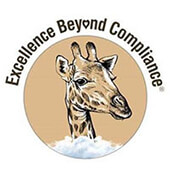
To keep ahead, each one of us, no matter what our task, must search for new and better methods—for even that which we now do well must be done better tomorrow.
—James F. Bell
Only in growth, reform, and change, paradoxically enough, is true security to be found.
—Anne Morrow Lindbergh
Opportunities multiply as they are seized.
—Sun Tzu
Seven Years of the Getting Better All the Time Column, and the Secret O’ Life
By the time this particular column is published by the Academy, it will be just over seven years since words like these first appeared in the newsletter. That was just under 70 (or so) columns ago. My heart is full of gratitude to the Academy and all those helping to get this out, appreciation for the good work and good works of caregivers and other readers, and indebtedness to those animals, mentors, and loved ones who have inspired the effort and the ideas.
Invariably, the reading, research, thinking, writing, rewriting, and more that has gone into every message has far exceeded the time and work anticipated. Fortunately, and especially in retrospect, it remains a joy to endeavor to help make us all better so that we can do more good for animals, each other, and our world (both the zoological one and the planet). As such, this reflection on the column draws one to these lines from James Taylor’s “The Secret O’ Life.”
The first line: “The secret of life is enjoying the passage of time.” Check. Loving one’s calling and making a difference is pure joy.
Second, “The secret of love is in opening up your heart.” I did that surgically this year, and also in each and every column through the years—love (and respect) for the animals and one another.
These “secrets of life,” long embedded in these columns, apply to both our service on behalf of animals and each other.
Opportunities to Better Protect Animals and People
New Contingency Plan and Training of Personnel Regulation and Related Resources
The U.S. Department of Agriculture (USDA) Animal and Plant Health Inspection Service (APHIS) has issued new regulations for contingency planning and training of personnel. These regulations require regulated entities “to develop, document and follow up on an appropriate plan to provide for the humane handling, treatment, transportation, housing, and care of their animals in the event of an emergency or a disaster.” The plan consists of identification of potential emergency situations relevant to the particular facility and its location; specific tasks required and those responsible for them; chain of command with defined responsibilities; materials, resources and training needed for response and recovery.
To assist regulated entities like zoos, aquariums, marine and wildlife parks, and sanctuaries licensed under the Animal Welfare Act (AWA), the agency has updated its website and other associated informational materials.The agency’s timeline notes that written contingency plans must be in place by July 5, 2022, and it provides various time frames for employee training regarding the plan (most would be required to be trained within 60 days of the plan’s adoption).
The agency has provided the official version of new form 7093 “Contingency Plan Program,” which can be used to prepare and document the plan or as a checklist to evaluate your already written plan. There are also new Animal Care Tech Notes: “Quick Reference: Contingency Plans for Emergencies,” and “Development Guide: Contingency Plans for Emergencies.”
The agency also recently held a webinar on the new regulation. The agency discussed the background and requirements of the regulation, as well as resources to help you with your emergency preparedness. Further information from the webinar is available on the agency website.
As noted in previous columns, deviation from the plan during an actual emergency may occur. The agency understands that that adjustments will likely be necessary and notes the importance of planning, training ,and preparing. If adjustments are needed, be certain to make clear and document the animal welfare, and animal and human (staff, public, first responder) safety-related bases for adjusting your actions to meet the actual circumstances of the emergency in the event the agency or others may seek to hold a facility to the plan if it was not followed and potentially avoidable adverse consequences ensued.
Animal Care Study of Public Barriers: Lessons and Further Developments
In furtherance of a USDA Office of Inspector General 2021 audit, USDA APHIS Animal Care has completed its public barrier study (using exhibits at a representative sample of 20 facilities that maintain “dangerous” species).
The study defined dangerous animals as “elephants, large felines (lions, tigers, cougars, leopards, jaguars, cheetahs, and hybrids), bears, great apes, hippos, rhinos, and wolves.” Barrier material (frequently a combination of things), height, and distance to the primary enclosure were considered. The list of materials used is worth consulting, to see if there is anything different that your facility might employ in an appropriate situation. Also included was a helpful chart of four documented incidents involving public barriers since 2015, including the deficiencies and corrective measures (alarms, staff and video monitoring, advanced, or new solid barriers). It would appear that the four incidents may represent an under-reporting of actual incidents during this time frame. Within the public barrier study itself, the agency and its outside consultant identified four situations involving deficient barriers, which was a very small number of the total enclosures reviewed.
The agency noted the challenge of balancing public barrier protections, and safety-related challenges with and the animal welfare benefits of naturalistic environments. A “guiding principle” for the agency was “that an effective barrier should prevent a child from passing over, under, through, or around it, and should prevent a reasonable adult from breaching it unintentionally or require considerable effort to breach it intentionally (i.e., more than simply stepping over or around it).” The agency also stressed reasonableness in application, noting “we feel it important to emphasize that barriers cannot be expected to counteract or offset all instances of poor judgment, misbehavior, or willful intent on the part of the public to enter a prohibited area.”
Finally, the public barrier study indicated that agency staff has recently reviewed current regulations regarding “handling of dangerous animals, training requirements for the personnel that handle these animals, and environmental enrichment [for other warm-blooded animals].” It is likely that an Advanced Notice of Proposed Rulemaking will be forthcoming on these subjects. That presents yet another opportunity to inventory and share good practices, and identify improvements.
Finally! The Proposed Rule for Birds Covered Under the AWA
On February 22, 2022, USDA APHIS Animal Care issued its proposed rule for birds: 87 Fed Reg. 9880. The agency webpage can be found here. Comments were originally due April 25, 2022, but the deadline has been extended until May 25, 2022.
For a succinct summary of the extensive proposal, see Dr. Nancy Halpern, Esq., Animal Law Update: “Comments Due for USDA’s Proposed Regulations Governing Standards for Birds Not Bred for Use in Research Under the Animal Welfare Act” (Feb. 24, 2022).
Acknowledging the number and diversity of bird species, the proposed rule relies heavily on flexible, performance-based standards—setting outcomes without prescribing means of attaining them. The proposed rule also adds a section titled “Environment enhancement to promote psychological well-being,” requiring bird species-specific plans approved by the attending veterinarian as part of the program of veterinary care. Subsections relate to social grouping, environment enhancement (materials and activities, special considerations for birds or categories of birds, like infants and young juveniles requiring special attention), restraint devices, and exemptions. In addition to the plan, exemptions for reasons of health or well-being are to be documented and reviewed at least once every 30 days, unless the bird has a chronic condition justifying the exemption. To further advance bird welfare, it would be most helpful if the proposed rule were amended to require documentation recording enhancement/enrichment provided, times provided, the impact on the bird’s behavior and well-being, and recommendations regarding continued use, as well as other different enhancement/enrichment. Such record keeping, which is often already done voluntarily, would allow inspectors to confirm implementation of the enhancement plan and assess its efficacy (which would benefit birds and staff alike).
Perhaps this reviewer missed something, but there appears to be a significant omission in the proposed rule that there is “no-fly zone” required for the birds. In the preamble, the agency responded to comments about sufficient enclosure space for birds to fly, stating: “birds can be in good health and maintained humanely in accordance with the Act without such a requirement”: 87 Fed. Reg. 9884. This long-awaited proposed rule is intended to provide for the unique needs of birds, and even a lawyer can see that a species of bird created and meant to fly should be able to be such a bird and fly (in the absence of a medical condition or some other very compelling justification precluding flight). This “no-fly zone” approach also seems at odds with several elements of the proposed rule, including portions on primary enclosures and the need for freedom of movement and space for normal postural and social adjustments. That primary enclosure provision tellingly notes: “[i]nadequate space may be indicated by evidence of malnutrition, poor condition, debility, stress, or abnormal behavior patterns”: 87 Fed. Reg. 9908. To the extent these conditions of concern evidencing inadequate space may arise in connection with the “no-fly zone” approach in the proposed rule, the standard for primary enclosures is inconsistent with the spirit and requirements of the AWA. This concern is also evident upon reviewing the largely beneficial environment enhancement section, which provides for the physical environment to be enriched to allow “activities that would provide the birds with the means to express non-injurious species-typical activities” (87 Fed. Reg. 9908). For these reasons, the final rule, which appears to be on a fast track to being issued, should replace the “no-fly zone” concept with a “gonna fly now” option for birds in appropriate circumstances.
Helping You Be and Do Your Best—Which Is More Important Than Ever
Animal Welfare Act Enforcement Activity has Increased Significantly
USDA APHIS Administrator Kevin Shea released the agency’s 2021 Impact Report in early April 2022. The Impact Report includes the Animal Care Unit’s activities and accomplishments under the AWA. In 2021, the agency conducted nearly 2,000 more inspections than in 2020, while the percentage of regulated entities found to be in “substantial compliance” with the AWA dipped slightly from 97 percent to 96 percent—which remains incredibly high.
While it is perhaps premature to conclude there is now a new “agency of enforcement” relating to the AWA (like that launched in 2010), investigations and meaningful enforcement actions have increased dramatically. In 2021, 118 new enforcement cases were opened. This is nearly quadruple the 30 cases reportedly opened in 2020 according to the agency’s 2020 Impact Report.
Agency Will End Use of “Teachable Moments” for Minor Items Identified in Inspections
Per Congressional directive, the agency will terminate the use of “Teachable Moments” during inspections sometime later this year. Teachable Moments have been seen by some as a constructive tool to encourage prompt correction of minor items not impacting animal welfare, and viewed by others as a way to under-report noncompliant items found during inspections. Although not included in inspection reports, like inspection reports, Teachable Moments are also posted online on the agency’s public search tool. With this looming change, there is considerably less flexibility in writing up and classifying minor items. Thus, little things matter more and heightened vigilance is warranted.
Increased Enforcement, Potential Additional Noncompliant Items on Inspection Reports, and the New Licensing Regulation Strengthen Accountability, Oversight, and Protection Under the AWA
More robust ongoing enforcement activity, the end of Teachable Moments, and the new licensing regulation that requires an entirely new license at least every three years provide greater accountability for AWA compliance, and enhanced oversight and protection of animal health, safety, and welfare. These are but the latest developments underscoring the importance of adopting, implementing, and refining good practices like those set forth in this column and the Excellence Beyond Compliance® book.
Essential References for Your AWA Compliance Effort, Including Inspection Readiness
As always, it starts with the AWA and the AWA regulations contained within the agency’s “Blue Book.” Since the electronic version of the Blue Book available on the agency website has not yet been updated to include them, here are the contingency plan and training of personnel regulation, as well as the new licensing regulation. The current version of the agency’s Animal Welfare Inspection Guide, updated November 2021, is indispensable for inspection preparation and understanding how the inspectors approach inspections as well as certain substantive requirements.
Opportunities to Better Protect Animals and People—Things to Know to Be and Do Your Best
It is up to you and your organization to make the most of things. The information reported above represents just some of the important things animal caregivers, other zoological professionals, and zoological organizations must understand and excel at, for your success. Most importantly, these things can contribute to making things even better and possibly even safer for animals and people, including you.
Board members, directors, officers, and attorneys/counsel should review “James F. Gesualdi, Advising on Animal-related Matters in Light of Ethical (and Other) Considerations,” recently published in the American Bar Association Tort, Trial and Insurance Practice Section Animal Law Committee newsletter. It addresses relevant legal professional ethics, one of multiple levels of important ethical considerations relevant within the zoological community (more to come on that). It is available upon request from the Academy or the author.
When we do the best we can, we never know what miracle is wrought in our life or the life of another.
—Helen Keller
Not enjoyment , and not sorrow,
Is our destined end or way,
But to act that each to-morrow,
Finds us farther than to-day.
—Longfellow
© 2022 James F. Gesualdi, P.C. The opinions expressed herein are solely those of the author. This is not, nor should be construed as, legal advice.

